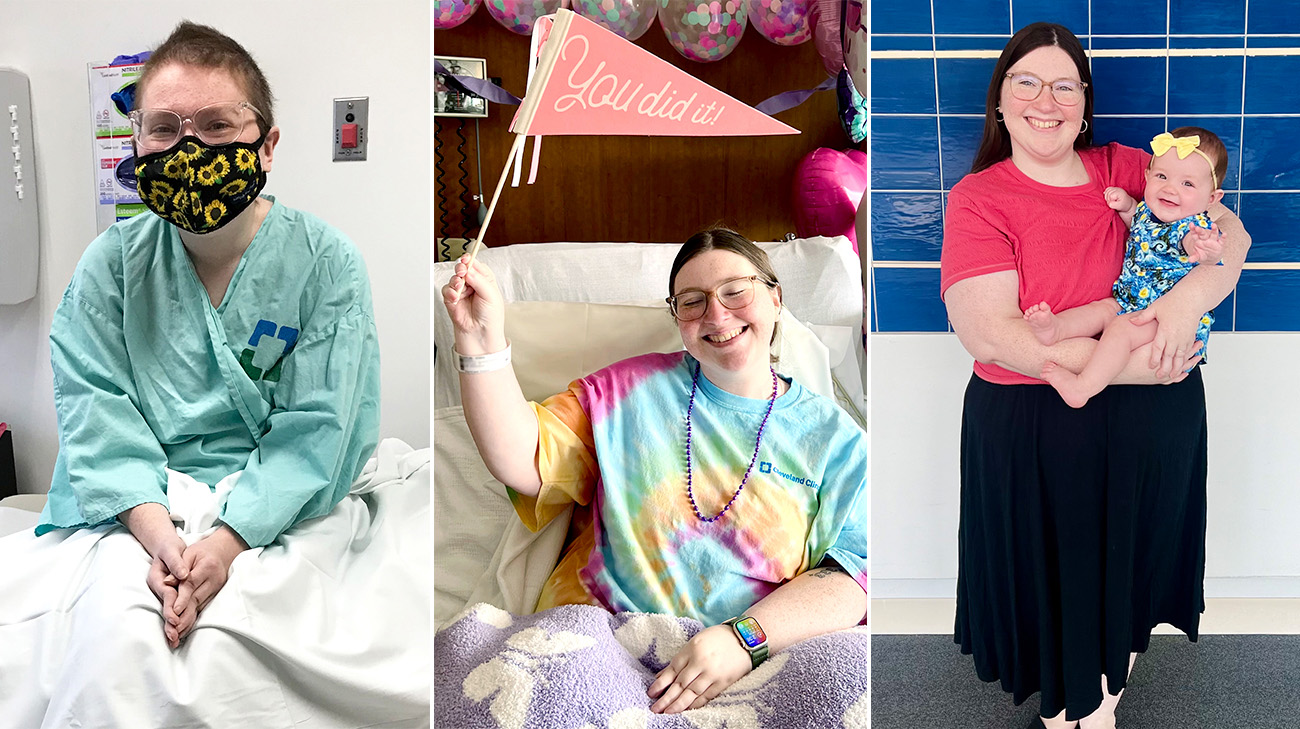
Living in a small West Virginia town, 27-year-old Sierra Butler enjoys spending time with her daughter, Mea, and husband, Jer. She doesn’t take any moment with them for granted, following a life-changing diagnosis that made her doubt this lifestyle would be within reach.
“After finding out I had lupus, there was a point when I couldn't even walk across my house without being out of breath and in extreme pain,” says Sierra. “Now, I spend most of my time enjoying motherhood and this family my husband and I weren't sure we would ever get to have.”
Sierra learned she had lupus at 23 years old, and the diagnosis came soon after she embarked on her teaching career. Ninety percent of people living with lupus are women. And most women with lupus are of childbearing age, between ages 15 and 44.
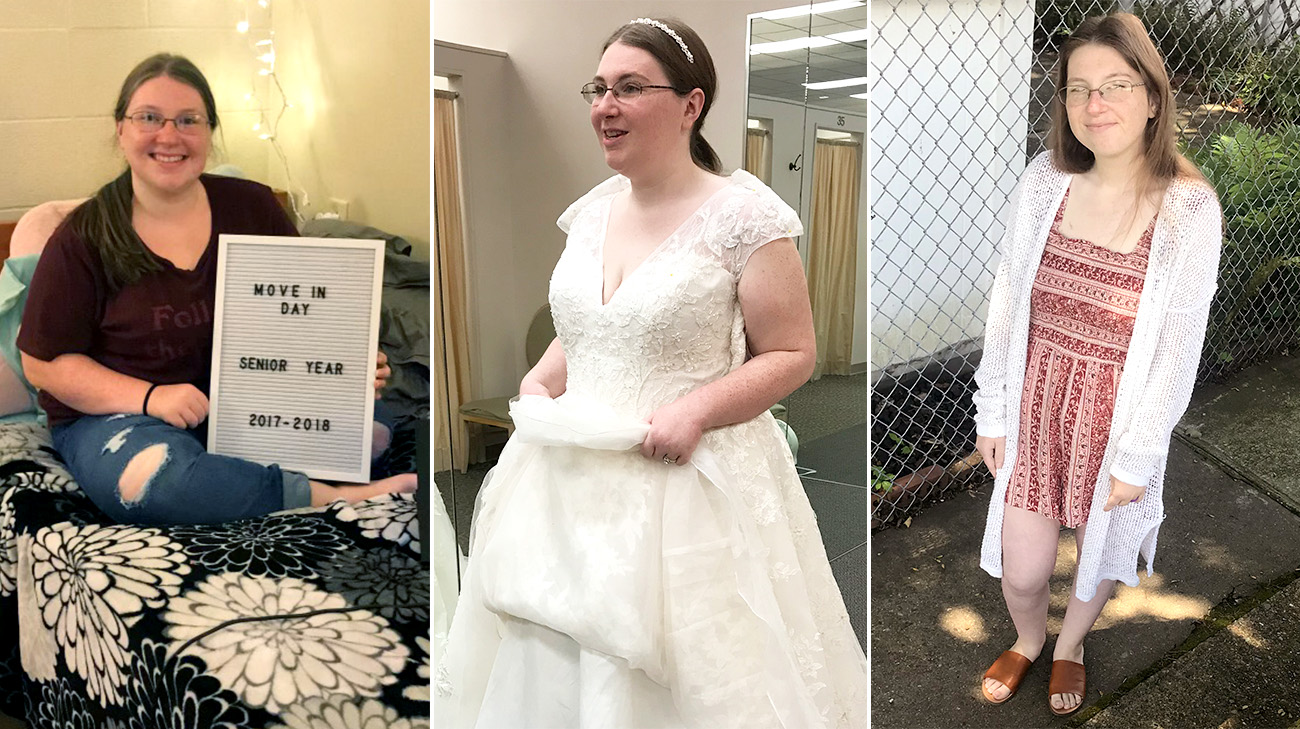
Over the course of a year, Sierra lost 115 pounds and even had to get her wedding dress taken in because of her rapid weight loss. (Courtesy: Sierra Butler)
For years, Sierra experienced uncertainty as no one could immediately pinpoint the cause of her symptoms. “During my senior year of college, I was experiencing unexplained weight loss, joint pain in my legs and rashes on my arms,” says Sierra.
Lupus wasn’t on her radar at that point, and when she visited the health clinic on campus, they thought her busy schedule was the culprit. But Sierra’s condition began to worsen when she moved to Phoenix, Arizona to teach.
“I went from having pain in just my feet and my knees to waking up with pain everywhere, from my jaw down to my toes. I truly had pain in every single possible joint in my body. I also began experiencing swelling and stiffness in all my joints,” says Sierra, who also had lost 115 pounds over the course of a year.
One day, she found herself not being able to stand up from the couch. Sierra decided to go to a local urgent care, and the doctor there believed she had rheumatoid arthritis. He gave her a list of rheumatologists, but none of them were accepting patients at the time because of the COVID-19 pandemic. Sierra and her husband ultimately resigned from their jobs and moved back home to West Virginia, where Sierra could see her childhood doctor.
“We were probably at the doctor's office for three or four hours, and I was just telling them every symptom I had. They did some blood work, and I got a call shortly after that I needed to go to the emergency department right away because my hemoglobin was dangerously low,” says Sierra.

Sierra and her husband, Jer, when she was diagnosed with lupus in June 2020. (Courtesy: Sierra Butler)
Further testing revealed Sierra’s kidney were failing and other bloodwork pointed to systemic lupus erythematosus, or lupus in the blood which can affect any of the internal organs. She was also dealing with lupus nephritis, which is kidney inflammation due to lupus.
After officially being diagnosed in June 2020, her health took a turn for the worse. Sierra says her poor kidney function was causing her to retain fluid, and she was in and out of the hospital almost every week that summer.
“I was completely dependent on my family. I could not even lift a cup up to drink. I was so weak, so my husband and mom took turns taking care of me,” says Sierra.
Due to her fluid retention, Sierra says she eventually developed cardiac tamponade, which occurs when the fibrous sac around the heart fills with blood or other fluid and puts pressure on the heart – preventing the heart’s chambers from filling properly. The condition is life-threatening if not treated quickly. After undergoing an emergency procedure, one of Sierra’s doctors recommended she seek care at Cleveland Clinic.
“He told me I had a healthy heart now, but it wasn’t going to stay healthy if I didn’t get my lupus under control. No one in my family had ever been to Cleveland Clinic. I just knew of the reputation of the hospital, so I was super emotional because I felt a lot of hope with this referral,” says Sierra.
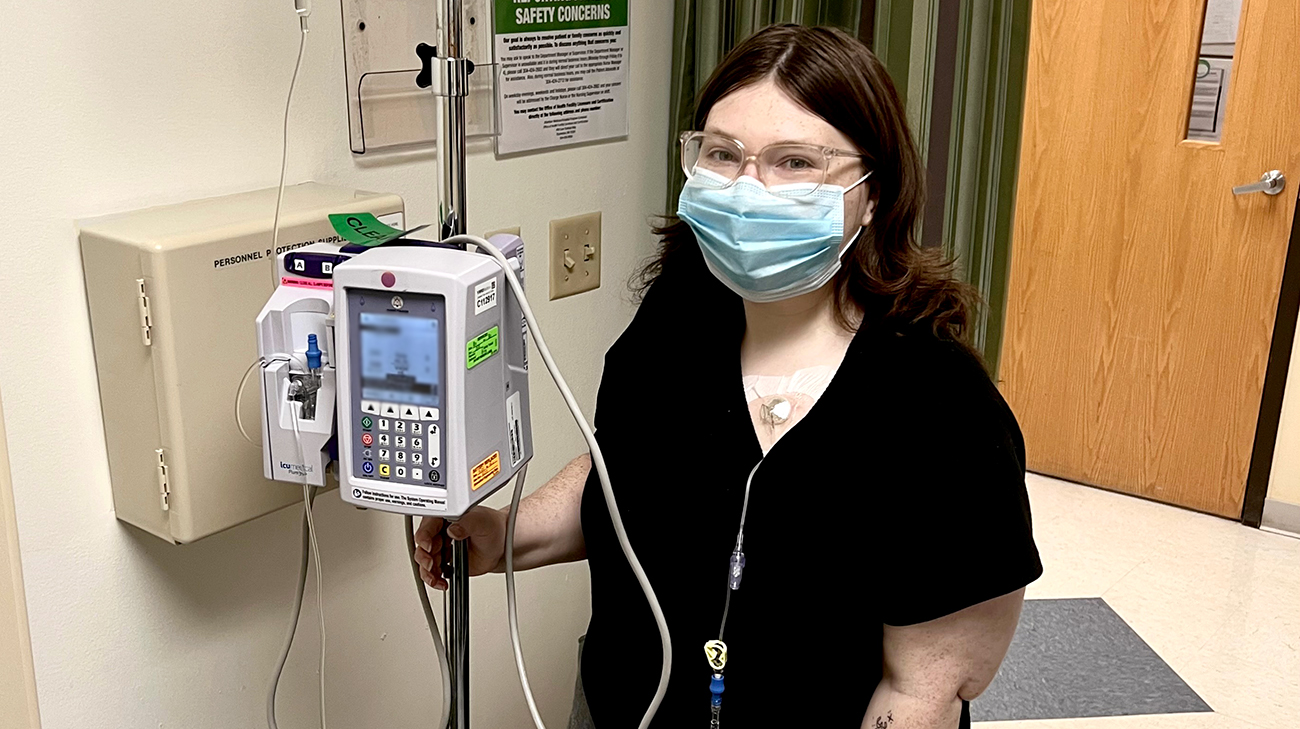
As part of her maintenance plan for lupus, Sierra says she would get two infusions every six months. (Courtesy: Sierra Butler)
Once Sierra arrived to Cleveland Clinic's main campus in Cleveland, Ohio, her care team – including rheumatologist Emily Littlejohn, DO, and nephrologist James Simon, MD worked to manage her lupus using a medication regimen of oral immunosuppressive therapy and IV infusion chemotherapy. Since lupus is an autoimmune disease that causes inflammation and can result in organ and tissue damage, chemotherapy drugs can help manage your immune system to try and prevent further damage and inflammation. Sierra says she quickly got on a more effective treatment plan at Cleveland Clinic.
“I was staying alive with the treatment I was getting before, but I was miserable. It was no way to live. With the new treatment, I started walking a lot more and was able to leave my wheelchair at home for short trips. I was also able to start seeing friends and go to family holiday parties again. I could envision a life with lupus for the first time,” says Sierra.
In addition to controlling her condition, Sierra’s care team worked with her to achieve another one of her goals: having a child. Sierra had married her high school sweetheart after college and wanted to start a family. Once her lupus was under control, Drs. Littlejohn and Simon slowly switched her to pregnancy-safe medications.
“I remember Dr. Simon asking me if I had any personal goals when making my treatment plan. I told him I wanted to start a family, and he said something along the lines of, ‘If that's your dream, then that'll be our dream, too. We'll do everything we can to make it happen.’”
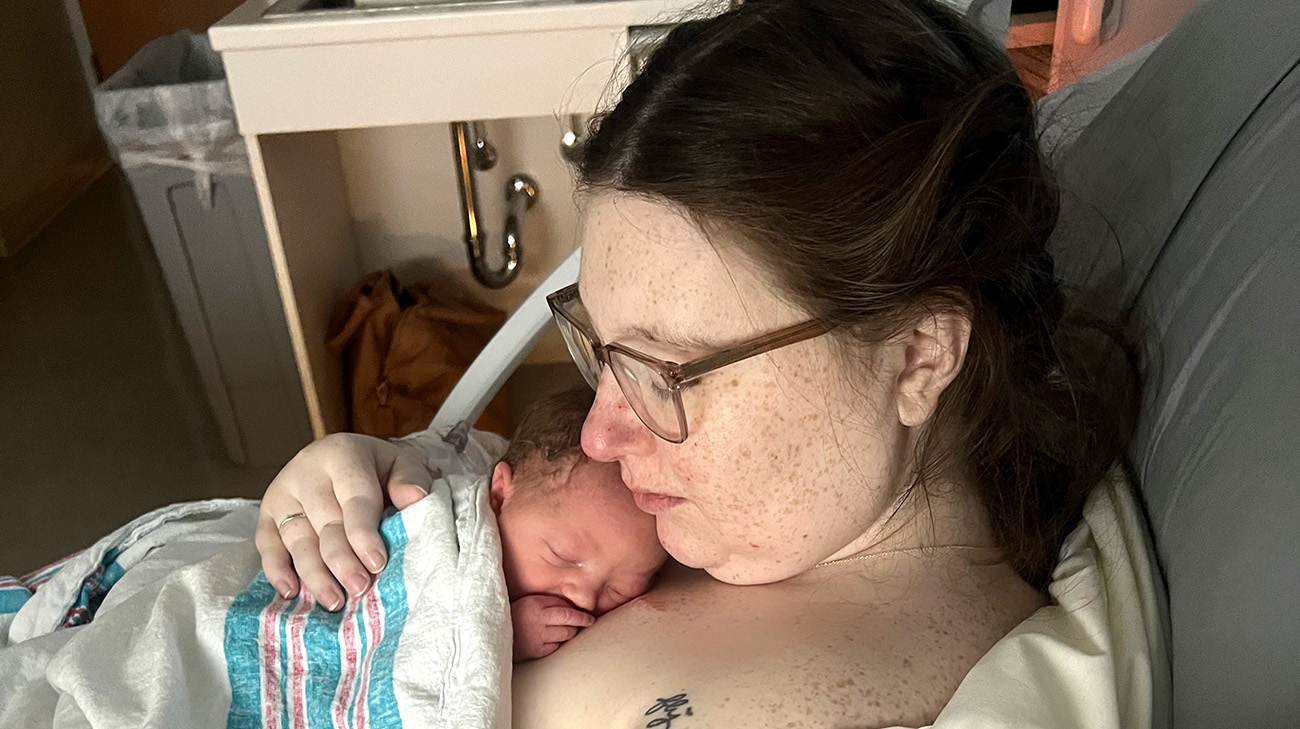
Sierra gave birth to her daughter, Mea, at Cleveland Clinic Hillcrest Hospital. (Courtesy: Sierra Butler)
Dr. Littlejohn adds, “We came up with a plan for Sierra and monitored her very closely. She would get labs done locally in West Virginia, which we would review and make sure her lupus remained controlled.”
After a two-year process to transition her medications, it was safe for Sierra to have a baby, and in November 2023, she gave birth to her daughter Mea. “To go from June 2020 when I was truly on my deathbed, to November 2023 where I was able to hold my beautiful, healthy baby was nothing short of a miracle. Mea would not be here if it wasn't for the Cleveland Clinic. I don't even know if I would still be here – let alone have a baby.”
Shortly after, Dr. Littlejohn explains Sierra’s lupus nephritis started to flare and become less controlled. Since there weren’t many new medications she hadn’t already tried, Dr. Littlejohn approached Sierra about a clinical trial to treat lupus using chimeric antigen receptor (CAR) T-cell therapy. Cleveland Clinic is a site for the first clinical trial in the U.S. for this treatment for systemic lupus.
“CAR T-cell therapy involves filtering out the T-cells, which are white blood cells in your immune system, and sending them to be genetically engineered to have a special receptor inserted into them. We then reinfuse the new T-cells into the patient, so these specifically engineered cells can find lupus-causing cells and kill them,” says Dr. Littlejohn.

Sierra during different phases of the CAR T-cell trial, including leukapheresis, chemotherapy and the day her modified cells were ready. (Courtesy: Sierra Butler)
Sierra was eager to join the trial because she had already read about the promising results from patients who took part in a similar trial in Germany. After testing to ensure she qualified to participate, doctors took Sierra off all her medications to enroll her in the clinical trial. She then underwent leukapheresis. During this process, a machine continually draws some of your blood, extracting your white blood cells and then returns the remaining blood to your body. After that, Sierra’s white blood cells were transported to a facility where scientists turned her cells into CAR T-cells. In the meantime, Sierra received chemotherapy as part of the clinical trial protocol to help prime her immune system.
She started the trial in March 2024. Dr. Littlejohn says Sierra’s kidney function has already drastically changed. “Her lupus nephritis is much better controlled, and the condition of her kidneys is improving. We anticipate we'll continue to see improvements with her lupus. It's not a quick acting therapy – we're essentially giving patients a new immune system, so it takes a while to get the full effect,” says Dr. Littlejohn.
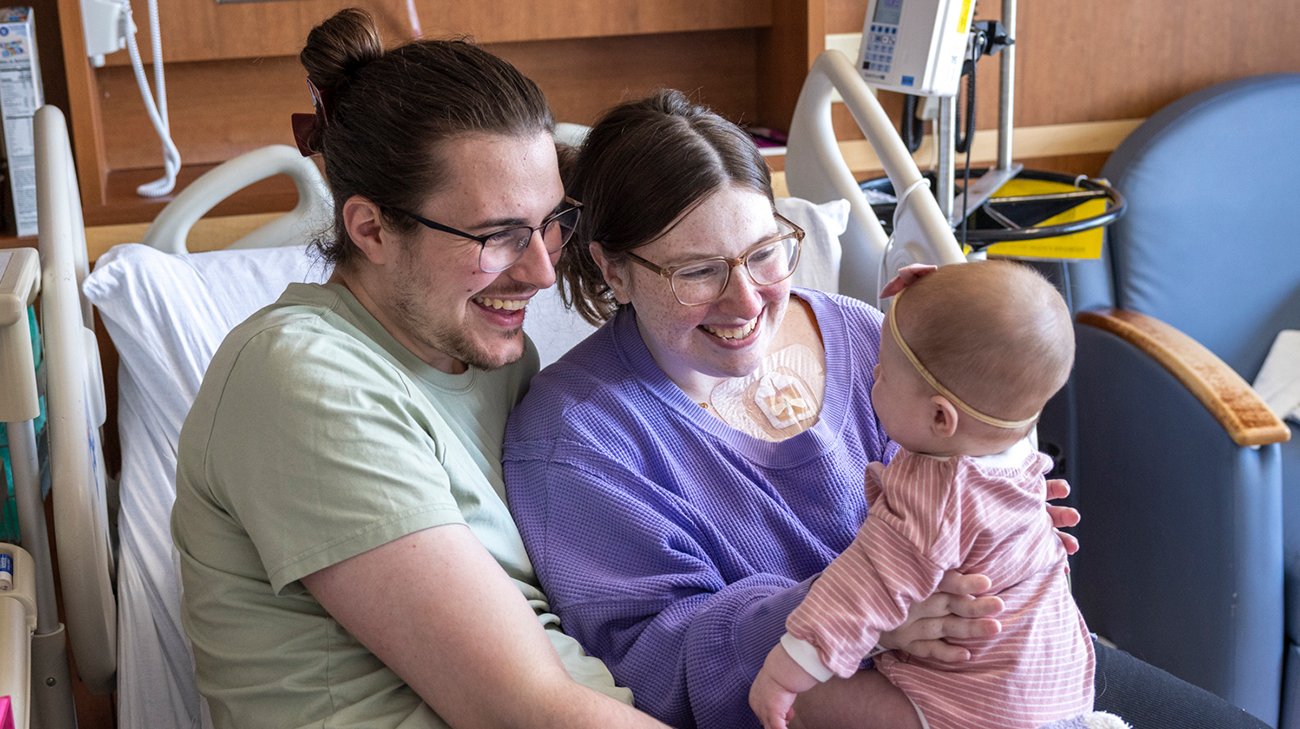
Sierra with her husband and daughter during a follow-up appointment at Cleveland Clinic. (Courtesy: Cleveland Clinic)
Sierra adds it’s a night and day difference when she compares how she feels now to the time she was first diagnosed with lupus. “My life is totally different now. I can take my daughter for walks in the stroller, and I can enjoy spending time with my family,” says Sierra.
Although she still experiences stamina issues as well as hand mobility problems due to a joint deformity associated with lupus, she remains optimistic about the future. Sierra hopes her story can raise awareness about the autoimmune disease and the promise CAR T-cell therapy has to treat it.
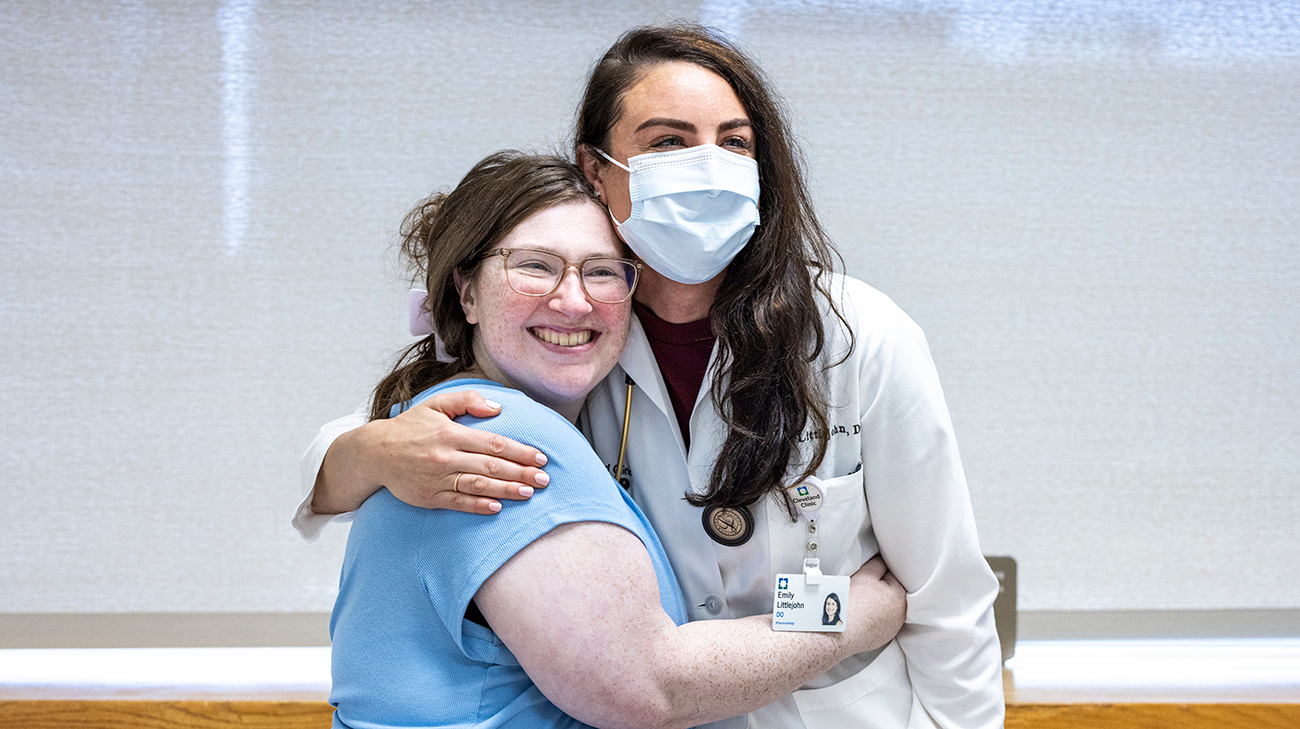
Sierra says she’s thankful for her care team at Cleveland Clinic, including Dr. Emily Littlejohn. (Courtesy: Cleveland Clinic)
“By sharing my story, I hope someone who’s undiagnosed will read this and think, ‘Hey, that kind of sounds like me. I should get tested.’ If the person participating in the CAR T-cell trial in Germany didn’t share their story, I would have had no idea what CAR T-cell therapy was. Because of them I understood the promise behind the treatment,” says Sierra.
Dr. Littlejohn adds, “Lupus is a disease where people live with chronic pain, illness and debilitating fatigue. There’s never really been any glimmer of hope for drug-free remission until now. The CAR T-cell trial shows science and technology have caught up to the point where we may have hope to achieve remission for patients with lupus.”
Related Institutes: Orthopaedic & Rheumatologic Institute

